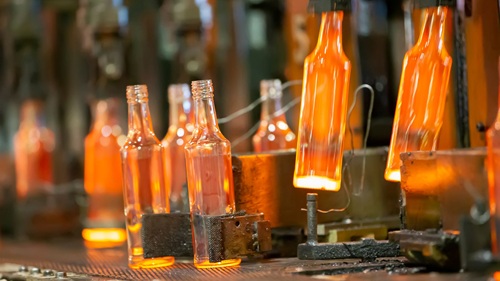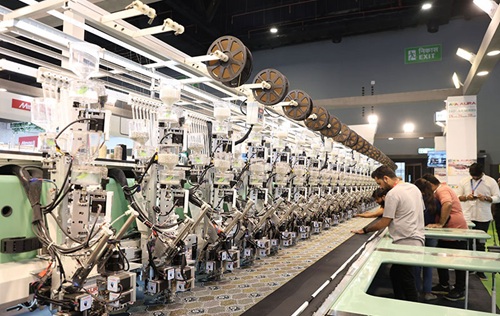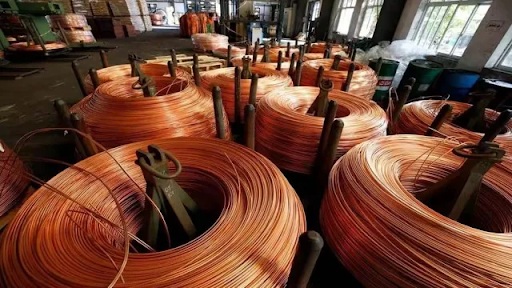The Indian glass industry in 2025 stands at the intersection of rapid economic growth, technological modernization, and sustainability imperatives. From architectural glass and automotive glazing to container glass for beverages and pharmaceuticals, the sector is experiencing a strong expansion phase — driven by infrastructure development, housing demand, vehicle production, and rising consumer awareness about energy efficiency. India is emerging as one of the world’s most promising glass manufacturing hubs, but challenges such as raw material costs, energy intensity, and import competition continue to shape its trajectory.

Market Overview: Growth and Size
As of 2025, India’s glass industry is valued at around ₹45,000–50,000 crore (USD 5.5–6 billion) and growing at an estimated CAGR of 8–10%. The market is broadly divided into three major segments:
- Flat/Architectural Glass – Used in construction, interiors, and solar panels.
- Container Glass – Used in packaging (food, beverages, pharmaceuticals).
- Specialty & Automotive Glass – Used in automobiles, electronics, and industrial applications.
According to trade and industry data, flat glass contributes roughly 40–45% of total industry revenue, container glass about 35%, and the rest comes from automotive and specialty segments.
India has also witnessed significant growth in exports of processed and float glass, especially to Southeast Asia, the Middle East, and Africa, as local manufacturers upgrade technology and capacity.
Key Growth Drivers in 2025
1. Infrastructure and Real Estate Boom
The government’s continued investment in smart cities, highways, airports, and commercial spaces is driving massive demand for architectural glass — particularly energy-efficient, tempered, and laminated glass. The rise in luxury housing and urban commercial projects has also created strong demand for aesthetic and safety glass.
2. Automotive Sector Revival
With India now the third-largest car market globally, demand for high-performance automotive glass — including UV-protected, solar control, and laminated windshield glass — has soared. EV manufacturers, too, are adopting lightweight and heat-resistant glass to improve vehicle efficiency.
3. Sustainability & Energy Efficiency
Consumers and developers are increasingly prioritizing green buildings and eco-friendly packaging, pushing demand for solar control glass, low-emission coatings, and recyclable container glass. The Bureau of Energy Efficiency (BEE) and Green Building Council guidelines are promoting wider adoption of efficient glass in urban projects.
4. Pharmaceutical and Food Packaging Growth
Post-COVID, there has been a consistent increase in demand for glass vials, bottles, and jars for medicines, vaccines, and premium food packaging. Indian glass container makers are expanding to meet this structural demand, as glass is seen as a safer and more sustainable alternative to plastics.
Major Industry Players and Expansion Plans
Leading domestic players like Saint-Gobain India, Asahi India Glass (AIS), HNG (Hindusthan National Glass), Borosil Renewables, and Gold Plus Glass dominate the landscape.
- Saint-Gobain India continues to invest heavily in its green and solar glass facilities in Tamil Nadu and Rajasthan, integrating R&D for high-performance glass.
- AIS is diversifying into architectural, automotive, and value-added products with new manufacturing lines to enhance capacity.
- Borosil Renewables, India’s only solar glass manufacturer, is doubling its capacity to cater to India’s growing solar installations under the National Solar Mission.
- HNG and AGI Greenpac are scaling up container glass production with automation and sustainable fuel options.
These companies are investing in low-carbon furnaces, renewable power, and digital monitoring systems to meet both domestic and export standards.
Challenges in 2025
- High Energy Costs – Glass melting and processing are energy-intensive, and rising gas and electricity prices affect profitability.
- Raw Material Dependence – Soda ash, silica sand, and limestone costs fluctuate, and local sourcing challenges persist in some regions.
- Import Competition – Cheaper imports, especially from China and Southeast Asia, put pressure on local margins despite import duties.
- Environmental Compliance – Stricter emission norms and waste-handling requirements require significant capex for clean technologies.
Despite these, technological upgradation, renewable energy use, and policy incentives are helping the industry maintain momentum.
Government Initiatives and Policy Support
- The “Make in India” and “Atmanirbhar Bharat” initiatives are promoting domestic manufacturing and reduced import dependence.
- PLI schemes for high-efficiency solar PV modules are boosting demand for solar glass.
- State governments are offering incentives such as tax rebates and subsidized land for setting up float glass and container units.
- Environmental guidelines are encouraging the use of recycled cullet (broken glass), which reduces energy consumption during production.
These measures are positioning India as a competitive global hub for both conventional and specialty glass.
Emerging Trends in 2025
- Smart & Switchable Glass: Increasing adoption in premium offices, malls, and EVs for privacy and energy management.
- Recycled Glass & Circular Economy: Growing usage of cullet to reduce carbon footprint and energy use.
- Digital Manufacturing: Use of AI, IoT, and sensors to control furnace temperature and improve quality consistency.
- Export Focus: Manufacturers are expanding export markets across the Middle East, Europe, and Africa.
Future Outlook (2025–2030)
The Indian glass industry is projected to reach ₹80,000 crore (USD 9–10 billion) by 2030. With the shift toward smart cities, renewable energy, EVs, and sustainable packaging, demand will remain strong across segments.
The next phase of growth will come from:
- Energy-efficient building materials (solar and reflective glass)
- Solar glass for renewable power
- High-end automotive and smart glass
- Recycling-based container manufacturing
Conclusion
In 2025, India’s glass industry embodies the country’s transformation — modern, sustainable, and innovation-driven. Domestic demand, export potential, and policy push are aligning to create a sector poised for double-digit growth. The winners will be companies that invest in technology, energy efficiency, and green manufacturing, positioning India not just as a consumer, but as a global supplier of next-generation glass solutions.

